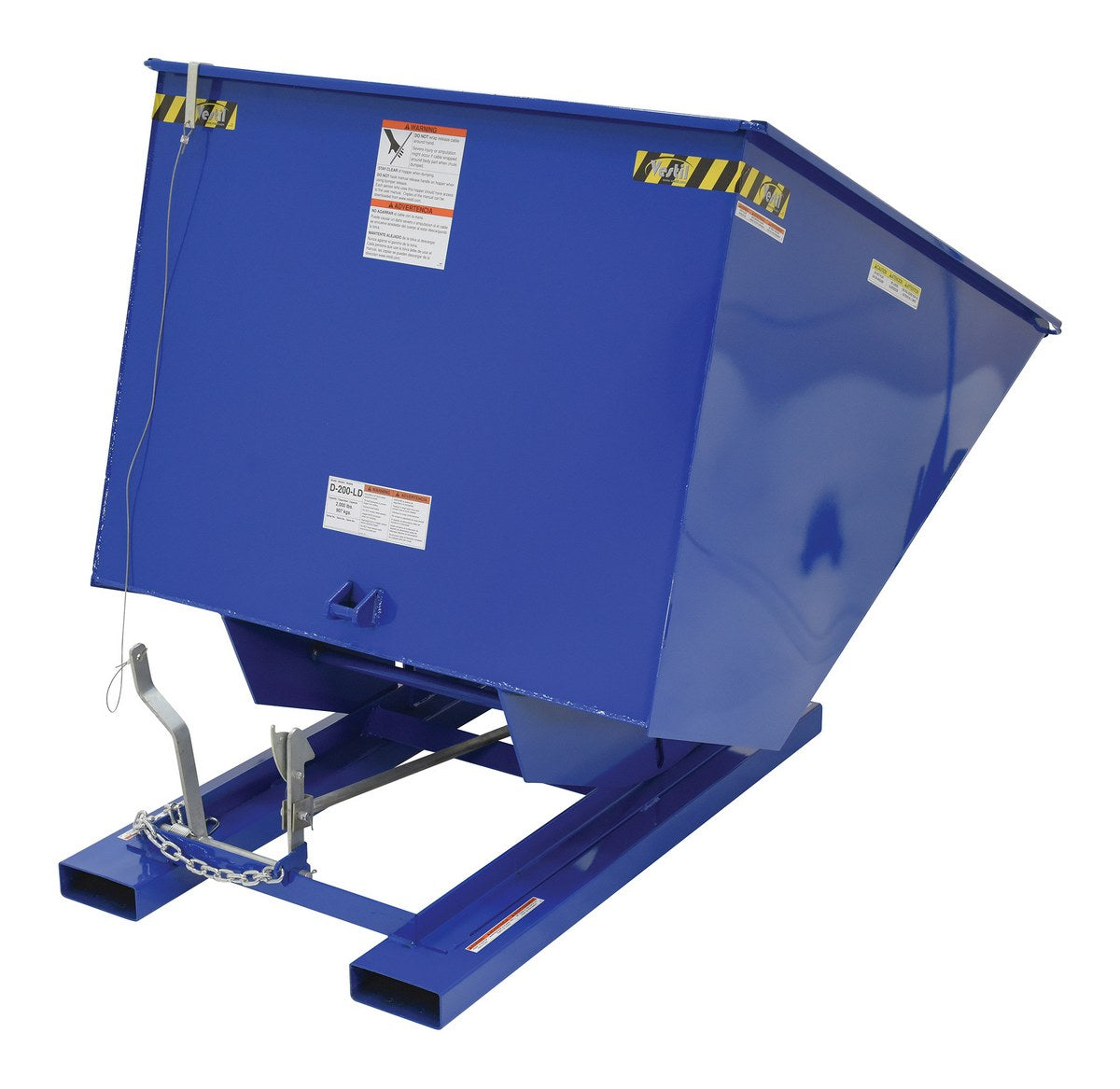Nobody buys a forklift just for the fun of driving it, but I've never met a forklift operator who doesn't enjoy it. Maybe because they're so agile and responsive. Maybe it's the power at your fingertips. Or something about the articulating rear-wheel steering that allows you to make sharp turns and maneuver in tight spaces.
Whatever it is, they're quirky little machines that get the job done. And while that job likely includes moving pallets of product hither and yon in your factory, it probably also includes getting waste out of the way and off your plant floor.
What is a forklift dumpster?
Also known as a self-dumping hopper, a forklift dumpster is a large hopper that has pockets or channels built into its base. This means a forklift can put its tines in, raise it, and transport it to a larger collection point such as an industrial skip. When the forklift raises it and bumps it up against the dumpster, the hopper tips forward and empties its contents. Then, as it backs away from the dumpster, it automatically rights itself again.
They are typically smaller than an outdoor unit and are used to transport waste from where the waste is produced to the bigger dumpster. Remember how we mentioned the forklift's maneuverability in tight spaces? That was intentional: a right-sized self-dumping hopper is key to efficiently keeping your factory floor free of waste, scrap, and byproducts.
Forklift dumpsters come in a variety of sizes and configurations. Some of them have a bottom that drops out while others, as mentioned, tip when you bump it against the larger trash skip.
What applications are suited to using a forklift dumpster?
They are used across multiple industries to efficiently handle bulk material, but especially to handle waste. You'll often find them on construction sites or in warehouses and factories, as well as in recycling operations. It's easy to throw scrap and trash into it, and it's easy to use a forklift to lift it and transport it once it's full, to the exterior dumpster.
There are plenty of uses other than factory waste, too.
You'll find them used in landscaping, to move branches, grass clippings, and other yard debris items to compost areas. They can move mulch, gravel, or decorative stones to a different part of the project. And of course, when a site needs to be cleared out before starting, a forklift dumpster can make site preparation drastically easier.
In other heavy-duty industries, like mining and foundries, you'll find them useful for moving heavy goods, like rock, gravel, and casting raw material. In large-scale operations they may also be used to transport heavy tools from one part of the site to another.
And even food processing! Forklift dumpsters can be an efficient way to move grain from a storage area to a processing line. When food processing creates by-products, these hoppers can collect and transport them to their next processing point. And in a cold storage facility, a forklift dumpster can quickly move perishable foods in and out of the refrigerated areas, reducing the time food might be in higher temperatures.
Advantages of a forklift dumpster versus a standard dumpster
One benefit of a forklift dumpster is their size: a little smaller than a typical outdoor one. They are big enough to hold construction debris on a job site, but still small enough that a forklift can lift them and tip them into the standard dumpster.
The biggest advantage of a forklift dumpster is its efficiency: it saves both time and space. They are small enough to put close to the need. For example, if a milling machine is producing metal chips that will need to be transported to the scrap section for recycling, a forklift hopper is small enough to be put right next to the milling machine.
They contribute positively to workplace safety, too. They reduce the need for manual lifting and carrying. And like so many material handling items, safety is being engineered right into dumping hoppers. Some of them have chains now, to secure them to the forklift. The forklift operator does not need to leave the forklift controls to operate the dumpster. And after dumping the load, they automatically return to an upright position.
Safety and maintenance considerations
Like all equipment in your factory, you'll want to do regular maintenance on your forklift attachment. This includes visually checking for damage, lubricating any moving parts, and making sure that lifting points are stable.
A few more points to consider is to 'right-size' your hopper. One that's too big will be cumbersome and get in your way. However, they do have weight limits, and it's important to stay within those limits.
If you have any questions regarding your forklift dumpster sizes, please let us know, and we'll be more than happy to help you find the right size for your needs.

